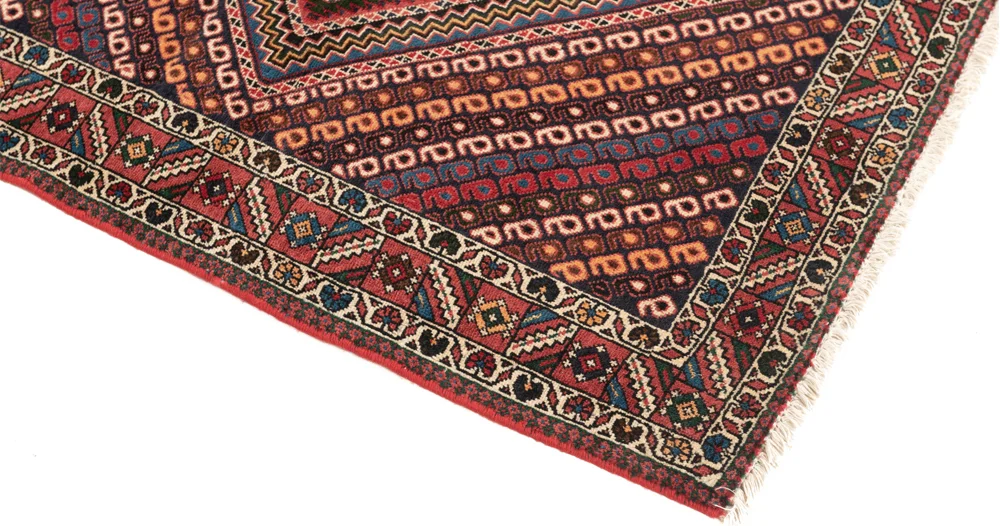Afshar tribe in northeastern Iran are people who created the art of Afshar rugs. These formerly nomads have relied on their aptitude for rug-knotting for survival for generations. They settled down in Afshar and are now there.
Their rugs are considered Persian and extremely popular due to their durability. If you are among the people who are interested in Afshar rugs, this article can provide you with helpful information.
What are the features of Afshar rugs?
- Afshar rug is a type of Persian rug
- Its origins from Nowadays near Kerman
- Afshar rugs typically have between 150.000 and 250.000 knots per 10.8 square foot.
- It is knotted in red and blue geometric patterns.
- Afshar rugs are distinguished by their stylized floral, geometric patterns, tribal artistry, and distinctive color palette of rust and blue tones.
- Deep indigo, carnelian, saffron, and ochre tones are the most prominent saturated colors.
- Afshar rugs are usually 3 x 4 to 4-5 x 7 feet in size and are rarely seen in room-size pieces.

The origin and History of Afshar Rugs
During the Safavid period, the Turkish Afshar tribe migrated from Central Asia to Iranian Azerbaijan, Azerbaijan Republic, and Eastern Turkey. Because of this background, regional influences on Afshar weaving have resulted in a distinct aesthetic that combines village and nomadic Persian rug styles with Southern Persian design influences. Caucasian rugs are also popular.
Afshar nomads were the most populous Persian tribe for centuries. They moved to southeast Iran in the 20th century. Their Turkish dialect points to Azerbaijan or East Turkey, though historians disagree. Another interesting fact is the similarity to antique rugs from the Caucasian village of Chajli in Shirvan (part of Russian Azerbaijan). Antique Afshar rugs preserve the tribe’s once-great legacy.
Antiquarian Afshar rugs feature rich dyeing techniques and lanolin-rich wool from their flocks. Afshar rugs had intricate flat weave ends and multi-colored selvage sides.
The last word
Today’s Afshar weavers weave tribal rugs and tapestries with cotton foundations and synthetic, not natural, dyes.
Though the rugs produced today are not as high-quality as antique Afshar rugs, they are good examples of the tenacity of these people, who have passed on their centuries-old weaving art to multiple generations.

